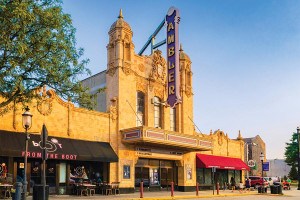William Penn Grant to Help Chestnut Hill Preserve What’s Special About It
![Wissahickon Valley | By InSapphoWeTrust from Los Angeles, California, USA (Wissahickon Valley, Chestnut Hill, Philadelphia) [CC BY-SA 2.0 (http://creativecommons.org/licenses/by-sa/2.0)], via Wikimedia Commons](https://cdn10.phillymag.com/wp-content/uploads/2017/01/Wissahickon_Valley_Chestnut_Hill_Philadelphia_6315957018.jpg)
Wissahickon Valley | Photo by InSapphoWeTrust from Los Angeles, California, USA, via Wikimedia Commons, licensed under CC BY-SA 2.0
And now, the CH Conservancy has even more to be happy about: the center just received funding from the William Penn Foundation’s Watershed Protection program for its joint project with the Chestnut Hill Community Association (CHCA).
The grant will support CH Conservancy and CHCA in their “Residential Conservation, Preservation and Development Study,” which aims to determine issues and priorities for preserving privately owned residential property and open space in the Chestnut Hill community, particularly the Wissahickon watershed.
“The watershed is really beautiful, but it’s also not a healthy strain with the development we have now,” says CH Conservancy executive director Lori Salganicoff. “There is a great deal of new development that is possible within the watershed, and in order to protect its health, we are seeking to moderate the amount of new construction.”
According to Salganicoff, there is a lot of interest in the Chestnut Hill area as a whole because it has remained relatively free of development thus far.
“Chestnut Hill is a part of Philadelphia that is unique in its architectural integrity and its integration of open space with this architecture,” Salganicoff says. “The development that has happened here over time has been about thoughtful architecture integrated with green space. The work that we’re doing is to help understand what is significant architecturally and from the perspective of the Wissahickon watershed. We want to protect that and help manage change.”
CH Conservancy and CHCA hope that this study will allow for a community-wide conversation about what residential issues exist in Chestnut Hill, and which of these issues should be prioritized most.
The study is currently underway and will continue through May. It is being headed by a Steering Committee made up of volunteers chosen by CHCA.
CH Conservancy and CHCA are not alone in their venture, either. They have assistance from the Natural Lands Trust, Philadelphia University, the University of Pennsylvania, and Friends of Wissahickon.
Salganicoff hopes to identify private properties that are currently unprotected from developers.
“The grant is meant to help us protect privately owned space,” she says. “Rather than have our organization run after people who don’t do what we think is ‘the right thing,’ we want to help shape what is significant and character-defining here, protect it, and help create tools around managing future development.”
On April 21, CH Conservancy will hold “Visionaries’ Roundtable: Preservation & Change in Chestnut Hill,” a public program where some of the project’s results will be revealed. On May 11, the Steering Committee will have its final meeting.
This collaborative study is happening prior to and in preparation for the Upper Northwest District Plan, a part of the Philadelphia2035 development plan set to begin in the fall of 2017 affecting Chestnut Hill, Germantown, East Germantown, Blue Bell Hill, West Mount Airy and East Mount Airy.
“We want to understand what we have here and what we value, so we can begin to educate the community about what is vulnerable before this city-led public planning process happens,” Salganicoff says.
Only time will tell how this project will benefit the Chestnut Hill community.


